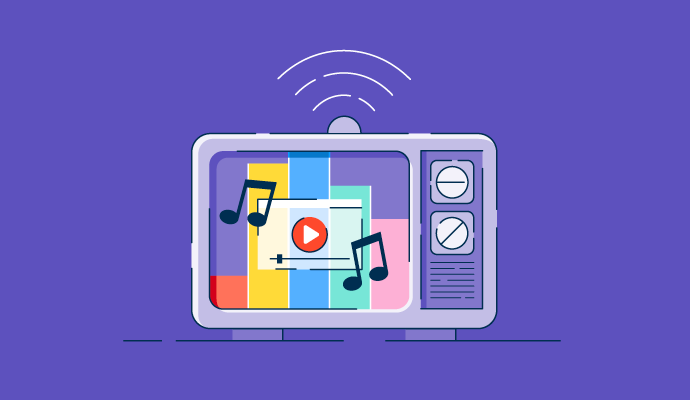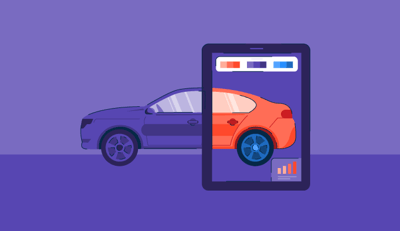Streaming has fundamentally changed the way we consume media.
A streaming service is an on-demand source of online entertainment that allows consumers to access audio and video content. The providers of these services require membership fees that typically take two forms: either pay-per-view or subscription. However, free streaming is readily available in the form of user-made content on platforms such as YouTube.
Users can also check out live stream software that helps present a live feed over the internet. Live stream software helps users to produce and edit live stream videos, provides audio and mixing capabilities, supply tools to engage with the host and audience, and much more.
The streaming industry has undergone tremendous change and is expected to continue to do so for many years to come. It is at the forefront of how we consume media and being aware of the ways in which it is utilized can be a valuable asset for marketing campaigns and thought leadership in consumer practices moving forward.
The following numbers and statistics provide insights into how streaming services have been used over the past few years and how they’re likely to evolve through the remainder of 2025 and beyond.
Key streaming statistics for 2025
- The global live streaming market was valued at $38.87 billion in 2022 and is projected to skyrocket to around $256.56 billion by 2032. That’s a growth rate of 28% per year from 2023 to 2032.
- In the first quarter of 2024, global users spent over 3 billion hours watching gaming content on Twitch, including 250 million hours dedicated to new game releases.
- Globally, 44.9% of internet users subscribe to OTT services, with North America leading the way at 73.6% of subscribers.
- Programmatic ad spending in streaming is on the rise, with CTV ad spend hitting $24 billion in 2024, a 23.3% increase.
- The global streaming market is expected to reach 770.5 million users by 2029. User penetration is projected to be 10.2% in 2024, rising to 12.2% by 2029.
General streaming statistics
From binging the latest TV sensations on demand to grooving to our favorite playlists with the tap of a finger, streaming services have woven themselves into the tapestry of our daily lives. Let's look at some general streaming statistics from 2024 and beyond.
- Major platforms like Twitch, YouTube Live, Facebook Gaming, and those run by Chinese tech giants dominate the market.
- In the U.S., 85% of Prime Video users had ad-supported accounts, while 15% chose ad-free. For Netflix, the split was 22% ad-supported and 78% ad-free.
- Globally, 35% of TV and video streamers have paid to skip ads, while this number rises to 48% among music streaming subscribers.
48%
users are paying for streaming services but aren't actively using them.
Source: Forbes
- Close to one-third of internet users engage with live streams as a type of video content they consume every week, with live concerts and music videos being the most popular categories.
- The global live streaming pay-per-view market was valued at $1.39 billion in 2023, growing at a 15.42% CAGR since 2018. It’s projected to reach $3.11 billion by 2028 with a 17.39% growth rate and $6.69 billion by 2033 at a 16.56% CAGR.
- 12% of adults between 18 to 34 watch live-stream videos multiple times a day.
- Americans spend an average of 8 hours per day streaming digital media.
- An average American pays close to $46/month for streaming services.
- An average of 45% people have canceled a streaming subscription within the last year due to an increase in price or because the cost was too high.
- 99% of all U.S. households pay for at least one or more streaming services.
Music streaming statistics
From the surge in subscription-based services to the ever-expanding libraries of songs, here are some interesting statistics about music-streaming services and the expected growth over the next few years.
- The worldwide music streaming market is projected to reach a revenue of USD 29.60 billion in 2024.
- Users spend an average of 20 hours and 6 minutes streaming music each week.
- Spotify remains the world’s leading music streaming service.
- Spotify holds close to 615 million monthly active users in Q4 2024.
- The music streaming industry is expected to show an annual growth rate (CAGR 2024-2027) of 4.70%, resulting in a projected market volume of USD 33.97 billion by 2027.
- United States is expected to generate the most revenue in streaming marketing globally, reaching USD 108.5 billion in 2024.
- By 2027, the number of users in the market is expected to amount to 1.1 billion users.
- The user penetration rate is expected to increase to increase to 14.1% by 2027 and is projected to be 12.7% in 2024.
- The average monthly cost for a music streaming subscription is $10.
- There are 99 million paid music streaming subscribers in the US.
- 67% of the total music industry revenue is made up of music streaming services.
- Globally, 32% of people listen to music using a streaming service.
- Ad-free listening is the top reason for paying for a music streaming platform.
Podcast streaming statistics
Podcasts offer a unique auditory experience, shaping conversations and connecting communities globally on various topics ranging from technology, current affairs, self-help, and much more. Here are some of the popular podcast streaming statistics.
- In 2024, 546 million people listened to podcasts, a significant increase from 82 million in 2021.
- Sweden and Norway have the largest number of monthly podcast listeners by percentage of internet users.
- An average user spends 7 hours per week glued to their favorite podcast app.
- Among all podcasting platforms, Spotify and Apple Podcasts lead the charts.
50%
individuals between the ages of 12 and 34 have listened to a podcast compared to 20% of those aged 55 and above.
Source: Statista
- Podcast episodes between 20-40 minutes reign supreme, catering to busy schedules and attention spans.
- Podcast listenership transcends gender, with men slightly edging out women (48% vs. 45%).
- Video podcasts are on the rise, offering a new dimension to audio storytelling.
- Peak listening time in the morning, with most episodes enjoyed on mobile devices.
- Niche topics like education, business, and self-help are gaining traction.
- 68% of music streaming users listen to podcasts on the platform.
Video streaming statistics
As video streaming services become apparent, so does video streaming usage. These statistics showcase the increasing numbers of consumers using video streaming platforms.
- Netflix has the most subscribers of any streaming service, with 280 million subscribers.
- 36% of video stream users report that Netflix is their favorite platform in terms of interface and user experience. Amazon is favored by 14% of video stream users globally.
- The over-the-top (OTT) streaming market is projected to grow from $171.99 billion in 2023 to $198.07 billion in 2024, with a CAGR of 15.2%.
$43.97 billion
is the expected video streaming revenue in 2024.
Source: Forbes
- The global video streaming market was valued at $677.91 billion in 2024 and is expected to surpass $4.49 trillion by 2037, growing at a CAGR of over 17.9%.
- On average, people are spending 4.3 hours streaming video content per day.
- The global live streaming market was valued at $1.22 billion in 2020 and is projected to grow to $6.56 billion by 2028, with a CAGR of 23.4%.
- Live video content generates 37% more engagement when compared to pre-recorded video.
- 70% of Twitch viewers donate to their favorite streamers.
Just a click away!
While the uses of streaming services might seem obvious at first glance, a lot of valuable insights can be gained from taking a deeper dive into the medium. It’s up to you to turn this information into a way to effectively leverage the ever-growing power of streaming services.
Looking for more information on all things tech? Check out our tech content for all the knowledge you could need!
 by Piper Thomson / December 3, 2024
by Piper Thomson / December 3, 2024
 by Sagar Joshi
by Sagar Joshi
 by Sagar Joshi
by Sagar Joshi
 by Sagar Joshi
by Sagar Joshi
 by Sagar Joshi
by Sagar Joshi
 by Sagar Joshi
by Sagar Joshi


